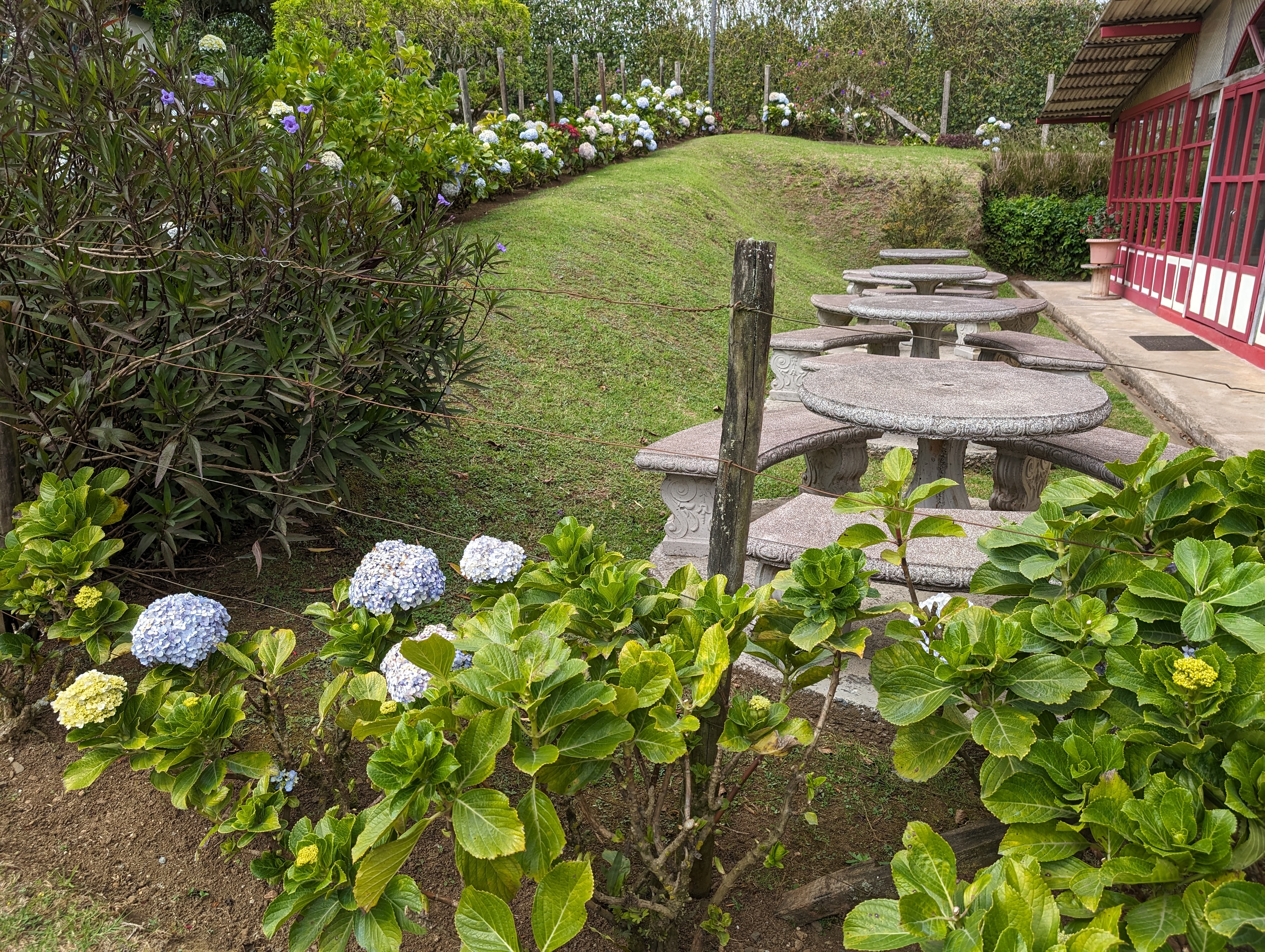Pura Vida- What We Can Learn From Tropical Horticulture and Culture in Costa Rica
go.ncsu.edu/readext?983218
en Español / em Português
El inglés es el idioma de control de esta página. En la medida en que haya algún conflicto entre la traducción al inglés y la traducción, el inglés prevalece.
Al hacer clic en el enlace de traducción se activa un servicio de traducción gratuito para convertir la página al español. Al igual que con cualquier traducción por Internet, la conversión no es sensible al contexto y puede que no traduzca el texto en su significado original. NC State Extension no garantiza la exactitud del texto traducido. Por favor, tenga en cuenta que algunas aplicaciones y/o servicios pueden no funcionar como se espera cuando se traducen.
Português
Inglês é o idioma de controle desta página. Na medida que haja algum conflito entre o texto original em Inglês e a tradução, o Inglês prevalece.
Ao clicar no link de tradução, um serviço gratuito de tradução será ativado para converter a página para o Português. Como em qualquer tradução pela internet, a conversão não é sensivel ao contexto e pode não ocorrer a tradução para o significado orginal. O serviço de Extensão da Carolina do Norte (NC State Extension) não garante a exatidão do texto traduzido. Por favor, observe que algumas funções ou serviços podem não funcionar como esperado após a tradução.
English
English is the controlling language of this page. To the extent there is any conflict between the English text and the translation, English controls.
Clicking on the translation link activates a free translation service to convert the page to Spanish. As with any Internet translation, the conversion is not context-sensitive and may not translate the text to its original meaning. NC State Extension does not guarantee the accuracy of the translated text. Please note that some applications and/or services may not function as expected when translated.
Collapse ▲The nighttime scents and sounds of the Costa Rican Caribbean forest are as idyllic as any you can imagine. You have chirps, tweets, hums, growls, barks….the soundtrack we in North Carolina can relate to from our summer days sitting on the back porch. I am happy to report to you from the wilds of Costa Rica in January 2024 from the NC Extension Gardener Travel Study Adventures Program. You may be asking yourself, ‘Amanda, how does this relate to us gardeners and growers in North Carolina?’ Well, I posed that same question to my 13 fellow travelers from North Carolina, Missouri, and Illinois, and I will share their insights with you.
You Can Learn A Lot About Others Cultures’ (and Climate) Through Their Gardening
Besides the extreme envy we all felt about how easy they make growing incredibly healthy and beautiful garden hydrangeas look, we have learned a lot about the value and pride Costa Ricans put into their landscape management. Small yards or modest farmhouse landscapes were meticulously managed and chock full of plants. The climate is ideal for native and exotic plants alike. The volcanic and highly-degraded tropical soils were still able to support an incredible diversity of plants with the aid of rain and comfortable day and nighttime temperatures.
The botanical gardens we visited clearly demonstrated the level of appreciation for the native diversity of Costa Rica and Central America, while also celebrating the ability to host plants from Neotropical areas around the world! Cacti from North

Hydrangeas in Costa Rica – Photo by Amanda Wilkins
America and Giant Birds of Paradise, Strelitzia nicolai, from South Africa were equally happy growing next to each other.
Costa Rica’s main economic driver is tourism, and their tourism board supports and promotes businesses to pursue the Certification for Sustainable Tourism. The hotels that we stayed at during our trip were members of this scheme and were surrounded by botanical gardens, which earns them points in the scheme. While making the hotel grounds incredibly beautiful and another attractive part of the trip, you also get the added wildlife benefits. Nothing is more authentic than listening to hummingbirds chirp-fight over a giant flowering shrub outside of your hotel window, or walking by a tree riddled with the large, hanging-basket nests of the Montezuma oropendola, Psarocolius montezuma, on your way to breakfast on an open veranda! The benefits from the country actively seeking to offset the sometimes negative effects of increased tourism are evident as you see local communities thriving and participating in supporting tourism. The reciprocity of locals and tourists makes for a much more harmonious experience for all.
You Can Learn A Lot About Your Own Culture Through Seeing Other’s Gardening Experiences
Observing beauty and diversity in the landscape are universal human desires. Humans innately despise a monoculture, so seeing these themes play out another country’s garden is enjoyable. The botanical gardens and parks we visited were equally valued by Central Americans as they were by tourists. It is also fun to see the same ecological themes also reflected in the native ecosystems.
Having a very diverse landscape and range of ecosystems, Costa Rica struggles with invasive species escaping into wild areas. You drive down the road and recognize species we grow as summer annuals and houseplants happily clamoring up the sides of mountains and growing fifty times the size they get in your house or yard. It is exciting to see these plants thriving in a way that they would never do at home in temperate North Carolina. Yet, many of these plants are from Africa, the Indian subcontinent and Asia. We struggle with invasive species in temperate North America, but nothing like the botanical monsters that tropical climates have. I am grateful I do not have to try to pull down Monstera vines from my woodland trees!
This contrast surprised me as our group members desired to know what was “native”. This goes to show how much “native” plants can give you a sense of place and adventure, almost exclusivity; just something new and novel from what you are used to seeing. We struggle with the appreciation and use of our own native plants in our landscapes at home in North America sometimes; yet, when you leave and come back, you gain a new appreciation for how special these plants are in the grand scheme of our planet’s ecosystems. I enjoy seeing orchids and bromeliads adorn the trees here, but I also value and cherish the colors of our fall leaves!
Gardening and Farming are Universal Cultural Experiences
Where there is civilization there is horticulture and agriculture. Humans have to cultivate plants and bring them into our lives to feel complete. We saw everything from sweeping grounds of gardens to small pots of succulents lodged into nooks and crannies of fences; giant rainbow eucalyptus towering over coffee plantations and impossibly-steep hillsides full of onions and greenhouses. These acts of plant husbandry supersede all nationalities, languages and climates, and become part of the human experience of life. Amazing what a simple garden tour can help you understand!
Amanda Wilkins is the Horticulture Agent for North Carolina Cooperative Extension in Lee County.




